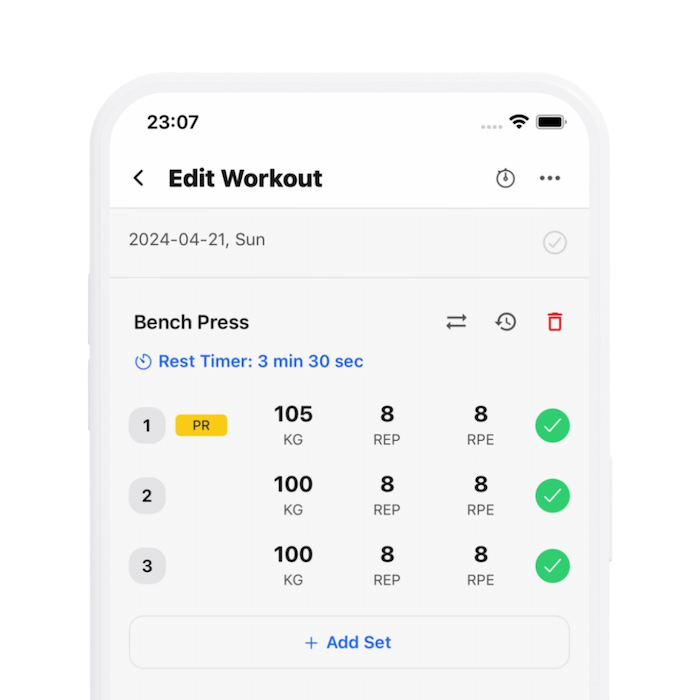30 Seconds SummaryTapering and Peaking: Why and How
- Tapering is crucial for enhancing performance by reducing accumulated fatigue, which allows for proper recovery from intense training.
- Tapering can potentially increase performance by 2-5%, and is especially beneficial for competitive athletes in powerlifting or other strength-focused sports.
- There are various tapering strategies, but linear tapering (progressive decline in training load) and step-tapering (sudden reduce in training load by a set percentage) are most common.
- Key elements of tapering include maintaining training intensity, while volume and frequency of workouts might be reduced.
- Studies show that maintaining or even slightly increasing intensity while tapering can lead to significant increases in maximal power outputs and strength.
- Tapering for approximately 8-14 days is suggested as optimal, but effectiveness can vary based on individual response and sport type.
- Differences in training responses between genders indicate that women might not need an extended tapering period compared to men.
- Despite extensive research, the precise mechanisms contributing to performance improvements through tapering, such as neuromuscular adaptations, remain not fully understood.
- Post-tapering hormonal adaptations (like testosterone, cortisol) seem to have minimal impacts on muscular adjustments.
- Insufficient tapering or nonfunctional overreaching can negate potential benefits, making it essential to adhere to recommended tapering protocols based on current scientific understanding.
Stronger By Science
Brandon Roberts
